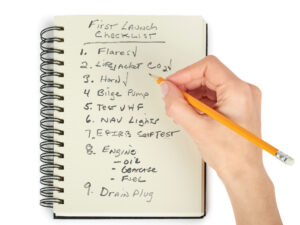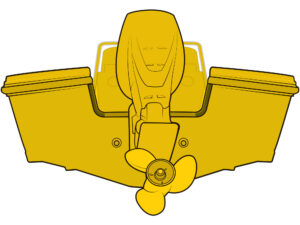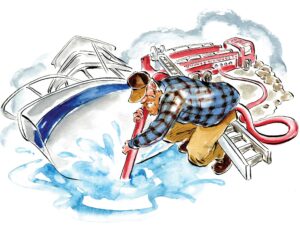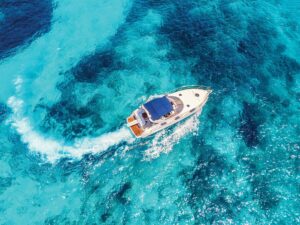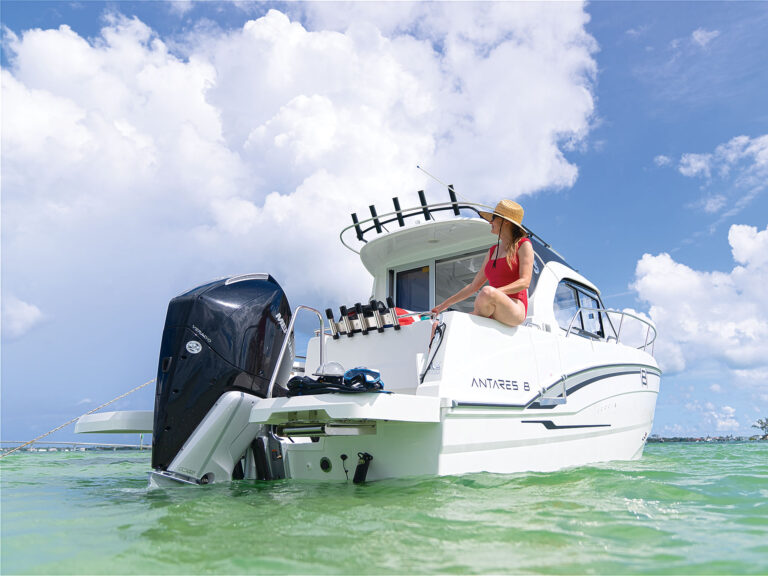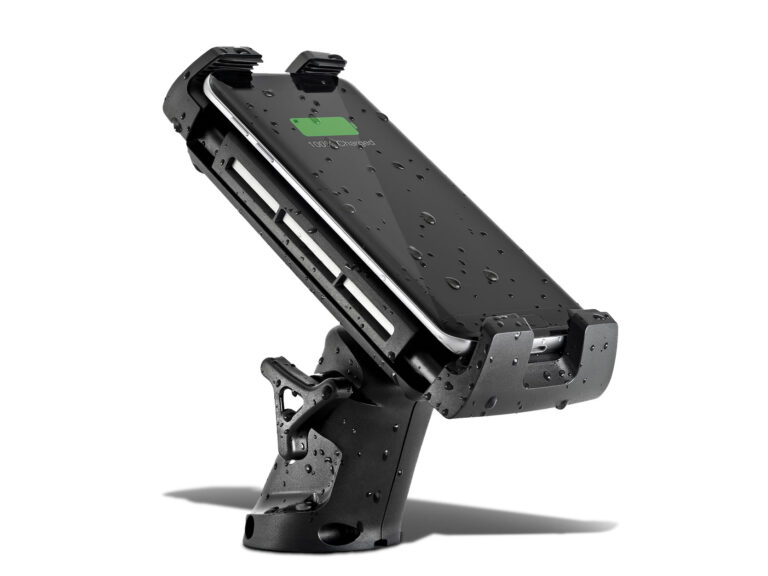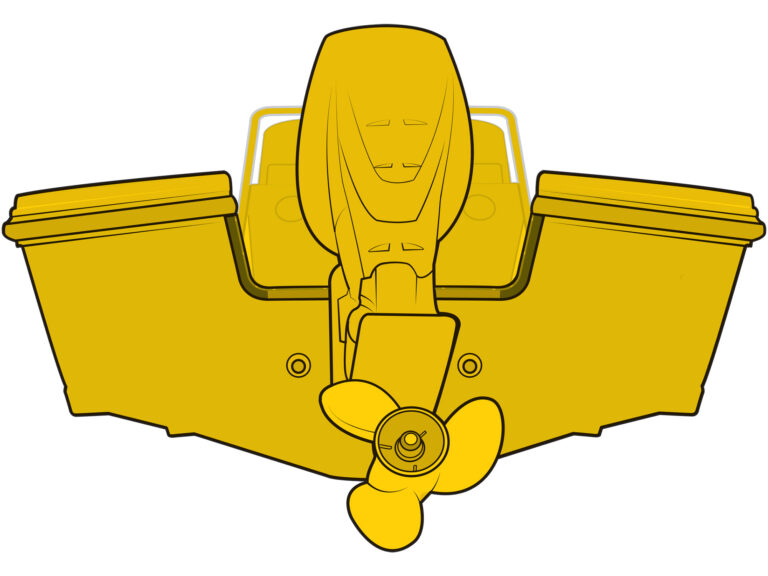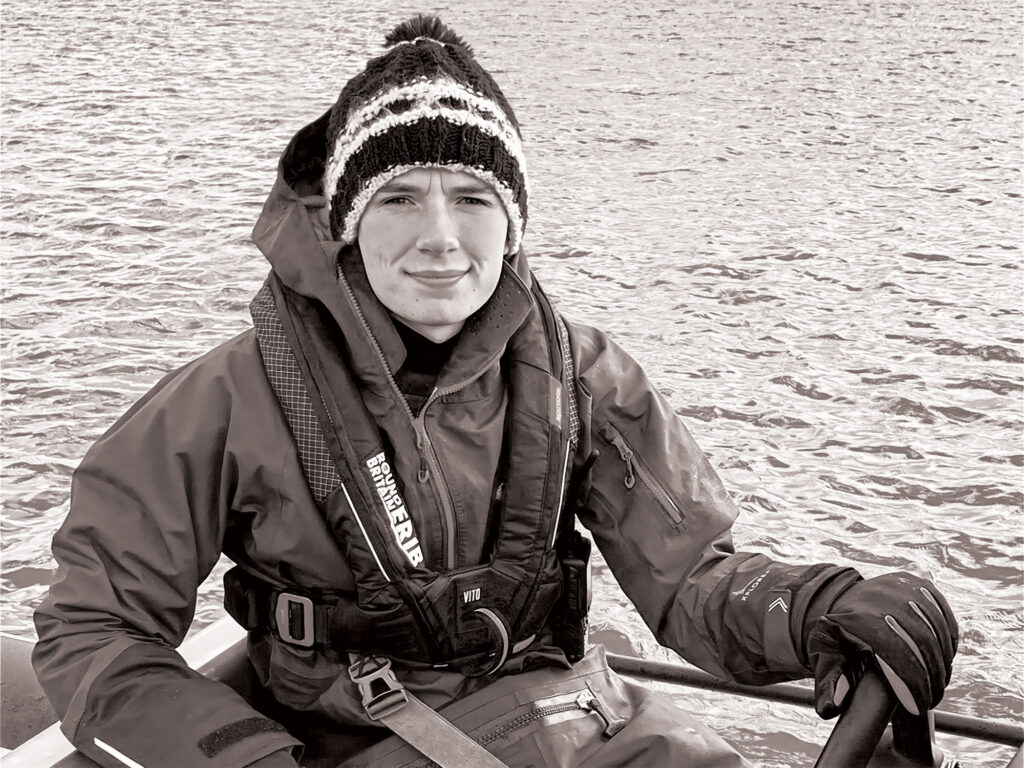
On July 13 of last summer, 18-year-old Harry Besley left Lyme Regis on the English Channel, aiming to be the first person to circumnavigate Britain in an all-electric boat. He and a rotating crew of friends stopped at more than 45 locations in England, Wales, Northern Ireland, and Scotland before completing the clockwise round trip on August 14. The team covered 1,708 nautical miles in Electra, a 21-foot Galaxy P7 aluminum-hull rigid inflatable boat (RIB) modified for electric propulsion and powered solely by a 90 kW (120 hp) Evoy Breeze outboard motor. The Evoy system consisted of two 63 kWh liquid-cooled, lithium batteries, a 6.6 kW AC charger, a DC fast charger, and a battery management system that could be remotely monitored. We caught up with Harry for some insights into his epic voyage. —Capt. John Page Williams
What prompted you to develop the Round Britain Electric RIB project?
“I’ve been on and around boats since I was three years old,” Harry explained. “I love sailing, water-skiing, and exploring along the [English] Channel in powerboats. I’ve also taken advantage of local courses in first-aid, lifesaving, and boating safety. For the past couple of years, I’ve thought a lot about circumnavigating Britain.”
“But I didn’t want to burn a lot of petrol making a trip like that,” he continued. “I wanted to show how powerboaters can reduce carbon emissions and promote clean boating. That goal is very important to me as a young person with much of my life on Earth ahead of me. I wanted to show that an electric boat can take this kind of extensive journey now, though I knew that planning for charging along the route would be a logistical challenge.”
Harry’s mother and project manager, Jaqui Besley, adds: “Right from the start, our intention was to help the marine industry move towards a more sustainable and environmentally friendly future, accelerating the change and encouraging industry investment. Our world-record attempt showcased some of the technologies which are leading the market in zero emission propulsion and helped develop knowledge, skills and infrastructure at the 40 locations we visited around the UK.”
This expedition required both training and logistic planning. How did you meet those challenges?
“The whole process took a couple of years,” Harry told us. “It was a huge, all-over-Britain team effort. My mother is a deeply experienced project and business manager. Our stakeholders provided invaluable help in planning charging stops. Jim Thomas, a local geography teacher and retired Helm for the Lyme Regis Lifeboat Station for Royal National Lifeboat Institution, was a great help in developing my skills on the water. More than 50 sponsors helped us with everything from seamanship training, electrical systems, shock-absorbing seats, and foul-weather clothing to insurance, fire protection, and funding.”
Distance between marina-charging stops ranged from 35 to 50 nautical miles. Though the shore support crew carried a petrol backup generator in case charging wasn’t available in an outport, Harry never had to use it.
Where did you sleep?
“Mainly in a tent on the roof of the shore-support landrover. The crew had short naps on board Electra but I couldn’t! Only eight nights in a real bed on a 32-day trip. To work around weather, tides, and charging availability, we had to start some days well before sunrise. At least Electra’s deck was long enough for one of us to nap while we were underway.”
Read Next: Decoding the Horsepower Ratings of Electric Motors
Which sections of the trip were your favorites? Which sections challenged your seamanship the most?
“We loved the dolphins that showed up periodically to play in our wake, and the seals, and the puffins. The scenery varied, of course, but it was often stunningly beautiful. We had to navigate some serious waves, strong winds, and big tidal currents, but I enjoy it when the water is rough. Electra is a very able boat, especially with the weight of the batteries that allowed her simply to crush choppy seas. The instant torque of the Evoy electric motor made it easy to handle seas, and our suspension seats helped a lot. Our technical clothing—especially our dry suits—was crucial to both comfort and safety.
“The seas were especially rough on the run from the Isle of Man to Northern Ireland, but with such a capable rig, we weren’t worried. The scariest incident came in our attempt to round the southwest corner of Wales, from Milford Haven to Fishguard at night in rough seas, when the electronic display showing charge data cut out. We had to turn back. Otherwise, the trip wasn’t bad—except for the lack of sleep. Balancing daylight, tides, and proper charging availability was a constant challenge, and they didn’t always line up conveniently. Staying sharp when fatigued was not easy; we made some silly mistakes, like tying up the boat overnight with lines too short for the tides. Thank goodness none of those mistakes were too costly.
“All told, it was a great adventure, but the next time I do this, it’ll be in a boat with a cabin!” [Get a feel for the trip by visiting Harry’s YouTube Channel at youtube.com/@RoundBritain_eRIB.]
What comes next for you?
“Well, I’m now on my gap year and having spent 3 to 4 months in the Mediterranean, I’m heading off to work in Australia. Then I’m back to London to go to university next year to study paramedic science. Maybe I’ll be able to combine boating with being a paramedic—who knows?”

